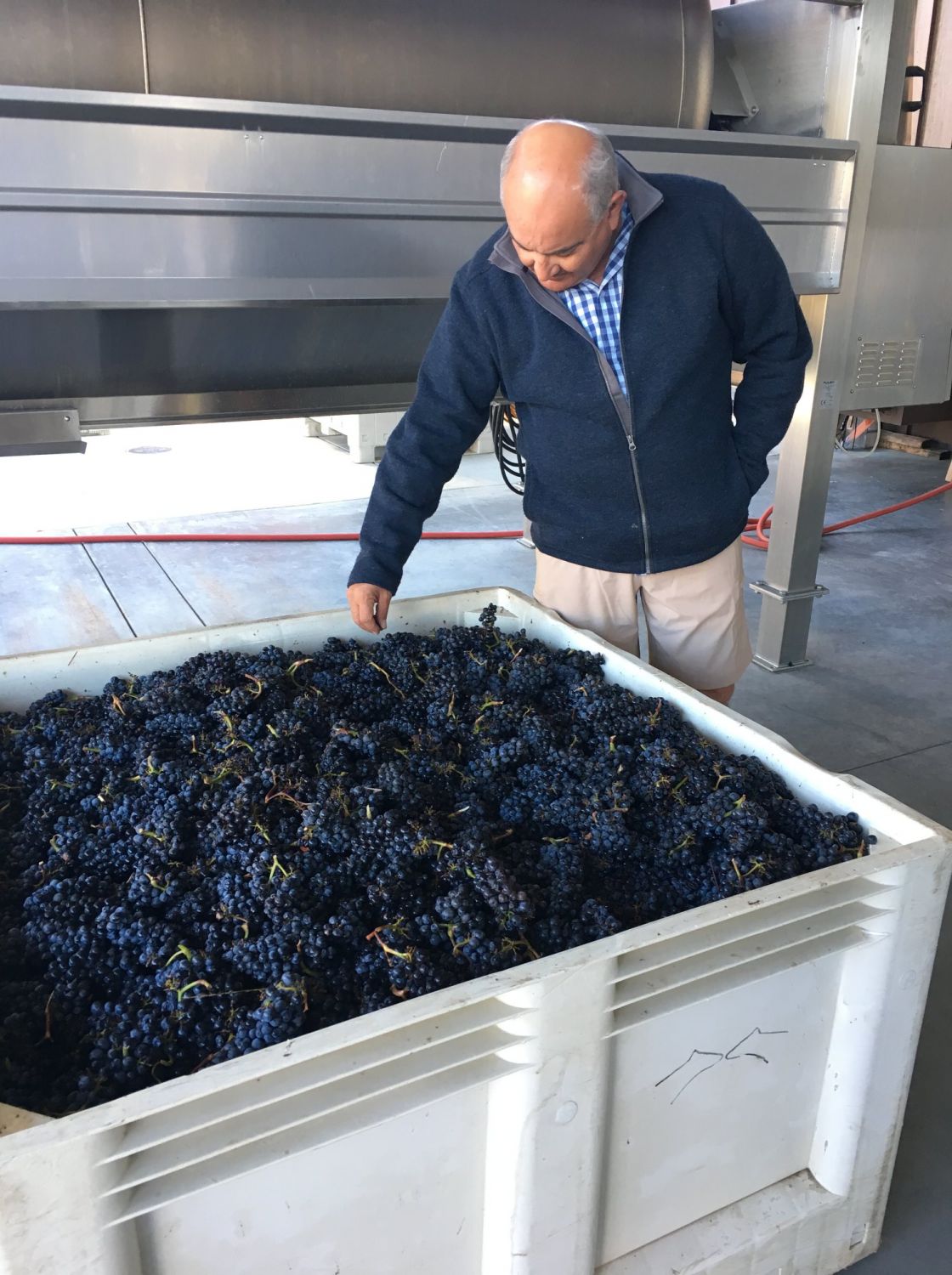$35 Flat Rate Ground Shipping on Orders of 6 or More Bottles

So, the first fruit is in. Pinot Noir. Fabulous condition. Not so fabulous chemistry.
OK so here is your first winemaker speak.
pH – 3.94
TA – 5.1 g/L
Malate 3.00 g/L
Tartaric 4.1 g/L
Brix 24.8
Yeast assimilable nitrogen 421 ppm as nitrogen
Potassium 2240 ppm
We will try to keep it pedestrian. You may remember from your high school / college basic chemistry pH is a “measure of the hydrogen ion concentration”, that is it is a measure of the “acidity”. The higher the number value, the LESS acidity. Water is pH 7, a VERY strong acid is pH 1.
In our world “things” have to live within very strictly controlled biological controls of which pH is one. More microbiological / biological systems “prefer” pH’s closer to “neutral” (that is 7) than not. Living things can adapt and carve out a niche by surviving harsh conditions to the exclusion of others. Yeasts and bacteria are no different, and many yeasts and bacteria (“bugs”) have adapted to the conditions of wine. Generally, wine is pretty difficult for most “bugs” due to its low pH and elevated alcohol levels.
But even within that realm, there are “optimal” conditions for these specialized species. Wine tends to “ferment cleaner” (that is without off smells) at pH’s closer to 3.5 or so …. (EVERYTHING is relative) Of course all these things have limits.
One of the acids in wine, malic acid, is fermentable. That is, it’s metabolized by wine bacteria (the secondary or malolactic fermentation) to a “less acidic” acid, lactic acid. So, the resulting wine can / will be less acidic than the juice, and the pH may rise. This may increase the “tactile” perception, and perhaps shade the red wine a little darker (blue shift), but for now the main focus is the health of the ferment. So, it looks like the addition of a little “fruit acid” (tartaric acid) will drop the pH and slightly increase the tartaric acid level. At the very least it will move some of the chemistry towards “optimal” for the yeasts.
Although the pH will necessarily “show” in an organoleptic way (“taste / feel”) what usually is noticed in tasting is the “mouth acids” (tartaric /malic), so one must consider how the end result is to present itself in making these decisions. Also note the malic acid levels would be considered pretty high for this juice, and if fermented completely, could have quite an effect on the end “acidity” perception of the wine.
The sugar level “brix” is essentially a density measurement of the amount of sugar in the juice (dissolved solids). We also get an assay of the actual amount of glucose in the juice sample in considering the projected alcohol level of the resulting wine. An ESTIMATE of the projected alcohol level is approximately 58% of the “sugar” will covert to ethanol (note there are many factors that influence the actual ethanol production, but this is a good ball park estimate, without getting too technical)
Finally, we see potassium level, again this value is a bit high. This may be of some concern because of the interplay between some of the “fruit acid” (tartaric) and the potassium. The relationship between the tartaric acid, that is in its “conjugate base” form and the free potassium in solution, you can get the two species wanting to combine, which forms potassium bitartrate, which is ( for those of you who bake ) “ cream of tartar.
Just to back up just a bit. If you again remember from your early chemistry that in a (aqueous) solution, a weak acid (like tartaric) will dissociate to its anion and cationic forms. In the case of tartaric acid, it will “free its hydrogen” ion, and upon doing so will free its “conjugate” (or companion “base”) which is the tartrate. The potassium ions free in solution can (and will to some extent) COMBINE with those “tartrate” ions and form a solid potassium bitartrate. We see this in the form of fine crystals on some corks and bottles as the wine ages. Simplistically, the more potassium ions you have, the “more likely” they will form “tartrates” or in wine speak (the wine is unstable)
So going back to the beginning of the discussion, by adding tartaric acid (to drive the pH down) one is adding more “precipitable acid” to the mix. In other words to attempt to solve one problem, you may be introducing another (which you will have to solve later) And yes it IS possible to remove some of the potassium, but doing so may unbalance the acidity. At cellar temperatures almost all wines will slowly (the reaction is generally fairly slow) “throw tartrates”.
The nitrogen levels are there to show some of the more important metabolizable compounds utilized by yeasts as they grow/multiply. Nitrogen metabolism is important as the yeasts need to build quite a good amount of amino acids and other nitrogen containing compounds to remain healthy during the stress of the ferment. The juice is considered to have a goodly amount of nitrogen, not deficient in any sense.